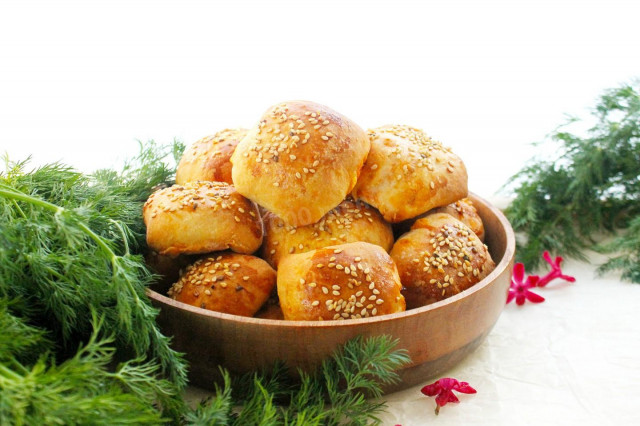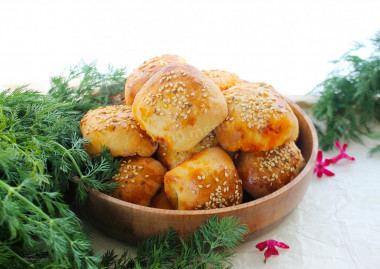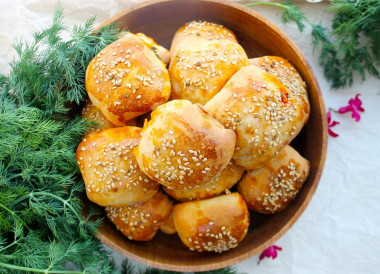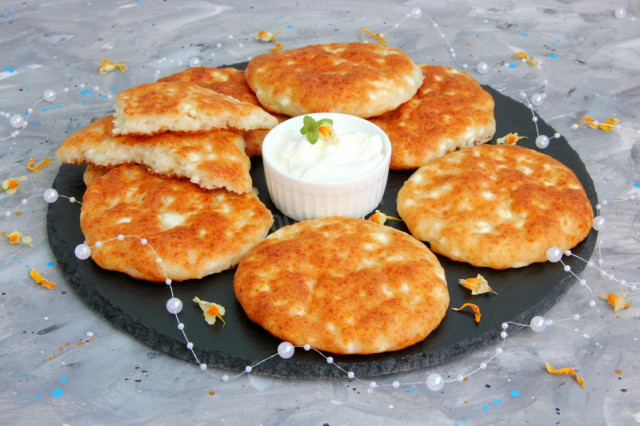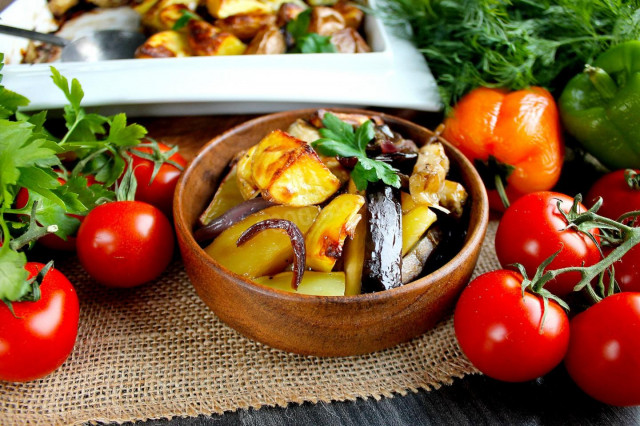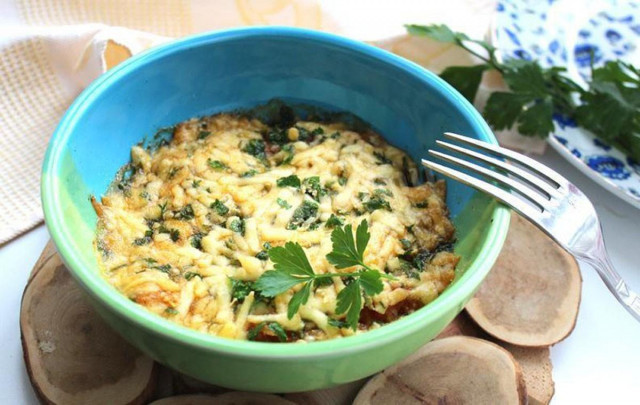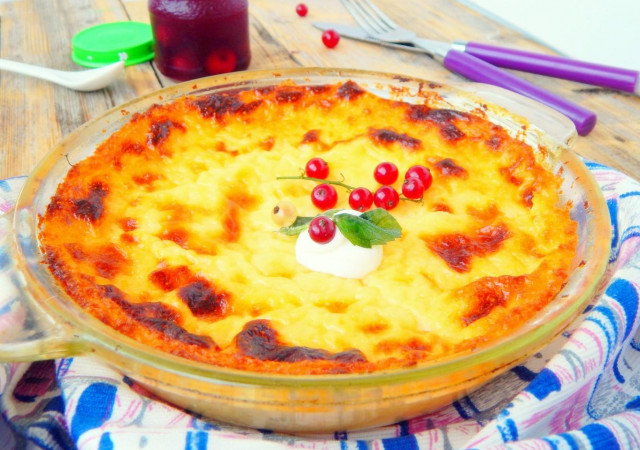Composition / ingredients
Step-by-step cooking
Step 1:
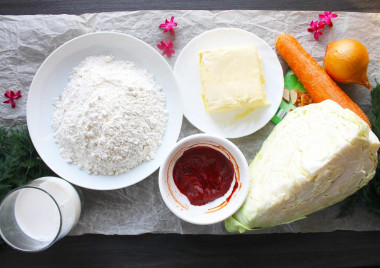
How to make mini pies in the oven? First of all, prepare all the necessary products according to the list. This time I made the filling from cabbage.
Step 2:
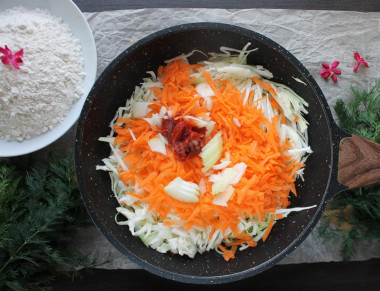
Since the dough is prepared very quickly, first prepare the filling. Cut the cabbage into thin strips, if possible, do not make the strips long, the smaller the cabbage is cut, the easier it will be to form pies in the future. Peel the onion and carrot. Chop the onion finely, and grate the carrot. Put everything in a frying pan, add a little vegetable oil, a tablespoon of tomato paste, a pinch of salt and sugar.
Step 3:
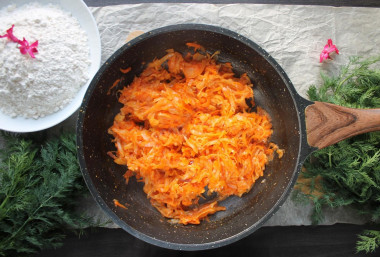
Mix everything, put it on the stove. Under a closed lid over medium heat, bring the filling to readiness. It took me about 30 minutes. If necessary, add a little water or tomato juice to the cabbage so that the vegetables do not burn.
Step 4:
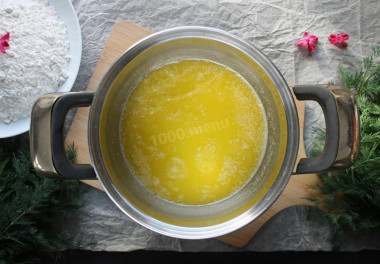
Prepare the dough. To do this, melt the butter in a saucepan or metal cup.
Step 5:
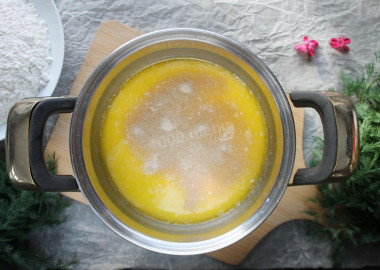
Add cold milk to the hot butter, stir. Then add dry yeast, sugar and salt, mix again (sugar and salt should dissolve). Leave the mixture for five minutes.
Step 6:
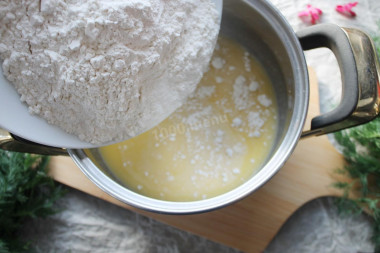
Gradually add the sifted flour to the butter and milk.
Step 7:
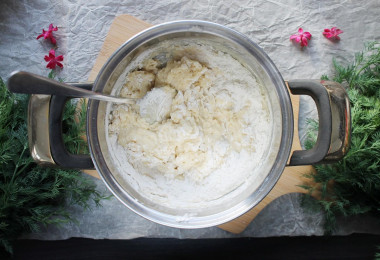
Knead the dough first with a spoon, then with your hands. You may need a little less or more flour than indicated in the recipe.
Step 8:
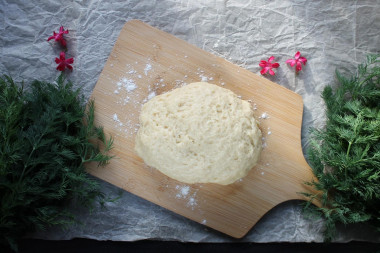
The dough should be soft, elastic and not stick to your hands.
Step 9:
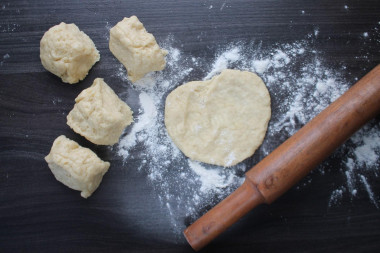
Divide the dough into 5-6 equal pieces.
Step 10:
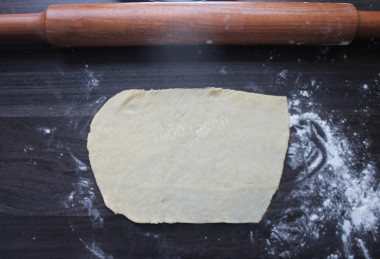
Roll out each piece into a thin rectangle.
Step 11:
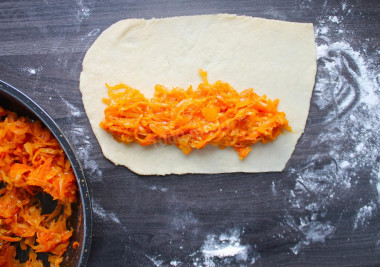
Lay out the filling, as in the photo.
Step 12:
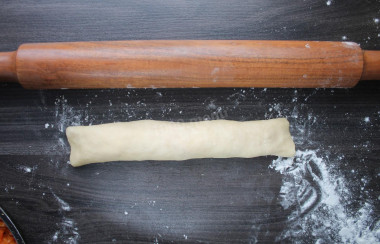
Roll the dough with the filling into a tight roll, press or pinch the edges.
Step 13:
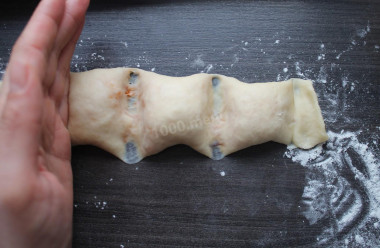
Dip the edge of the little finger and hands in flour, press the edge of the hand roll in several places, forming pies.
Step 14:
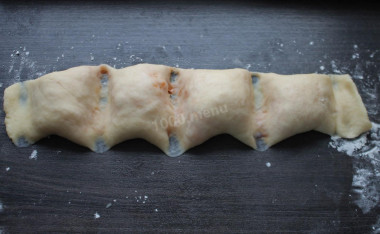
Press your palm with force so that the fragments separate from each other.
Step 15:
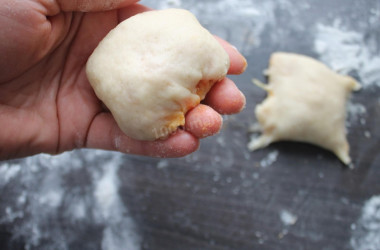
Pinch the edges of the pies (if necessary) and bend down.
Step 16:
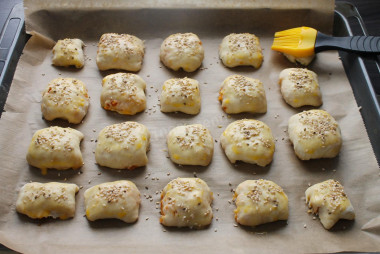
Cover the baking sheet with baking paper. Place the pies at a small distance from each other. Beat the egg into a deep small bowl and shake with a fork or whisk. Brush each patty with an egg using a silicone brush and sprinkle with sesame seeds.
Step 17:
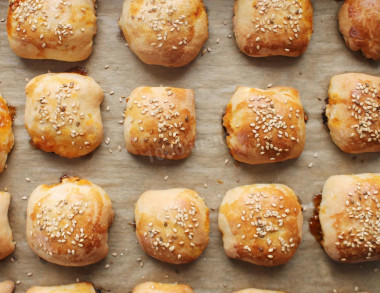
Place the baking sheet in a preheated oven at 180-220 degrees for 20-25 minutes (the time and temperature may vary depending on the capabilities of your oven). The pies should be browned.
Step 18:
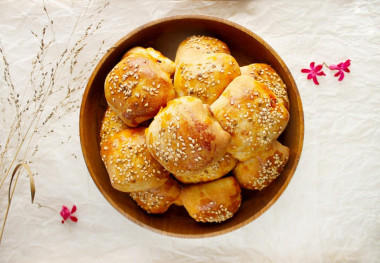
Remove the finished pastries from the baking tray and serve until the pies have cooled down.
Step 19:
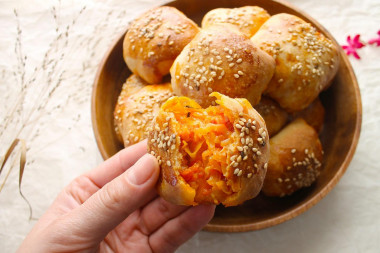
Soft, delicious and very appetizing!
Bon appetit!
Since the degree of salinity, sweetness, bitterness, sharpness, acid, burning is individual for everyone, always add spices, spices and seasonings, focusing on your taste! If you put some of the seasonings for the first time, then keep in mind that there are spices that it is especially important not to shift (for example, chili pepper).
Be prepared for the fact that you may need more or less flour than indicated in the recipe. Focus not on the amount of flour, but on the desired consistency of the dough. To avoid mistakes, read about flour and its properties!
Keep in mind that everyone's ovens are different. The temperature and cooking time may differ from those specified in the recipe. To make any baked dish successful, use useful information about the features of ovens !
So that the oven has time to heat up to the desired temperature, turn it on in advance (10-20 minutes before the start of cooking).
Calorie content of the products possible in the dish
- Onion - 41 kcal/100g
- Green cabbage - 46 kcal/100g
- Fresh frozen green cabbage in a package - 45 kcal/100g
- Whole cow's milk - 68 kcal/100g
- Milk 3.5% fat content - 64 kcal/100g
- Milk 3.2% fat content - 60 kcal/100g
- Milk 1.5% fat content - 47 kcal/100g
- Concentrated milk 7.5% fat content - 140 kcal/100g
- Milk 2.5% fat content - 54 kcal/100g
- Chicken egg - 157 kcal/100g
- Egg white - 45 kcal/100g
- Egg powder - 542 kcal/100g
- Egg yolk - 352 kcal/100g
- Ostrich egg - 118 kcal/100g
- Carrots - 33 kcal/100g
- Dried carrots - 275 kcal/100g
- Boiled carrots - 25 kcal/100g
- Whole durum wheat flour fortified - 333 kcal/100g
- Whole durum wheat flour, universal - 364 kcal/100g
- Flour krupchatka - 348 kcal/100g
- Flour - 325 kcal/100g
- Granulated sugar - 398 kcal/100g
- Sugar - 398 kcal/100g
- Butter 82% - 734 kcal/100g
- Amateur unsalted butter - 709 kcal/100g
- Unsalted peasant butter - 661 kcal/100g
- Peasant salted butter - 652 kcal/100g
- Melted butter - 869 kcal/100g
- Tomato paste - 28 kcal/100g
- Dried whole sesame seeds - 563 kcal/100g
- Shelled sesame seed - 582 kcal/100g
- Salt - 0 kcal/100g
- Pepper - 26 kcal/100g
- Dry yeast - 410 kcal/100g

